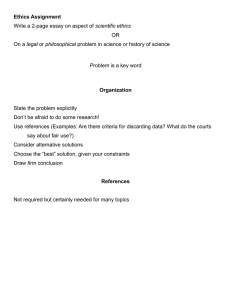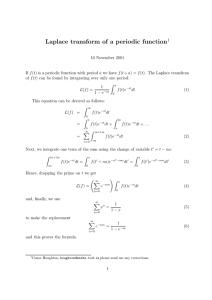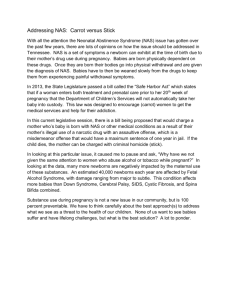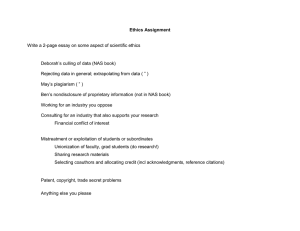“The Next Accreditation System ” (NAS) ’S ROLE
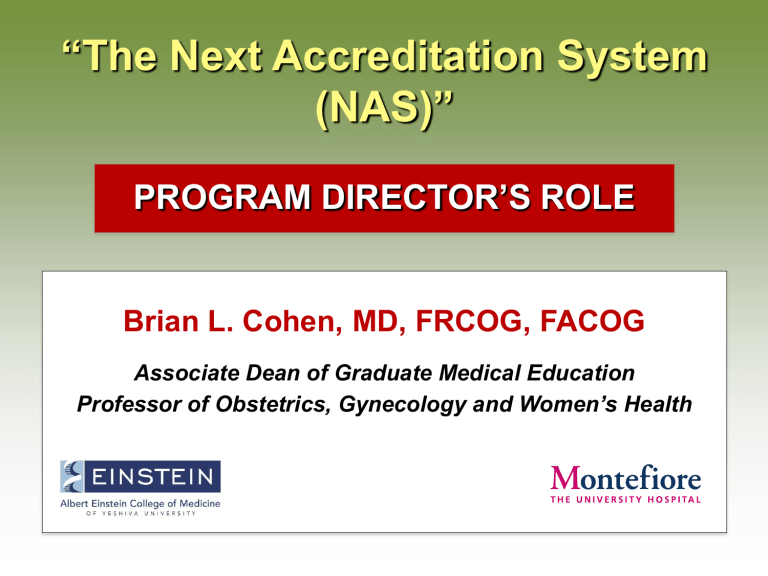
“The Next Accreditation System
(NAS) ”
PROGRAM DIRECTOR ’S ROLE
Brian L. Cohen, MD, FRCOG, FACOG
Associate Dean of Graduate Medical Education
Professor of Obstetrics, Gynecology and Women ’s Health
Introduction
1999: ACGME introduced the domains of clinical competency
2009: ACGME began a multiyear process to restructure the accreditation system to be based on outcomes
2013: Phased implementation of the NAS
Aims of NAS
Enhance the peer review system to prepare physicians
Accelerate ACGME accreditation based on outcomes
Reduce the burden of the current system which is process based
Basis
Institute of Medicine Report
Public pressure
Congressional pressure
Constrained finances and possible reductions for GME
July 2013
-
Phase I
NAS will be implemented by 7 of 26 core specialties
Emergency medicine
Internal medicine
Pediatrics
Diagnostic radiology
Neurosurgery
Orthopedic surgery
Urology
All other specialties and preliminary programs implementation July 2014
GME communities must be prepared for changes
NAS Compliance
Five important data collection areas:
① Annual ADS consists of:
Program statistics
Program structure & resources
Scholarly activity
Teaching responsibilities
NAS Compliance
② Board Pass Rates
Improve curriculum / didactics
NAS Compliance
③ Clinical Experience
Case log
Case mix
Minutes from meetings of program evaluation
NAS Compliance
④ Resident Survey
Duty hours
Supervision & teaching
Teamwork
Education vs. service
Evaluations
Patient safety
NAS Compliance
⑤ Patient Safety
Resident participation
Additional Information
Minutes from annual meetings to be submitted annually
Residents on committees
Sample PLA & LOA policy
Policies
Supervision
Handover rounds
Work hours
Others
Milestones
Essential component of NAS are the MILESTONES
Basis is to track development in the 6 competencies
Dreyfus Model:
Novice
Advanced beginner
Competent
Proficient
Expert
Master
Milestones
Milestones Developed By
RRC
Boards
P.D.
’s
Residents
Milestones
Milestones Will Supplement,
Not Replace Existing Assessment Tools
Timeline:
Develop by December 2012
Submission to ACGME 2013 & 2014
Clinical Competency Committee (C.C.C.)
Include
Core faculty
Program directorprofessionalism
Chief resident
Function
Evaluate milestones & early warning
Track progress of residents
Faculty development
Purpose
Reduce potential bias/subjective
Function measure
Decision making by multiple people
Evaluate 360 ° assessments
Clinical Learning Environment
Review (CLER)
Focus is:
On resident learning of patient safety
Institution responsibility for quality and safety of the learning environment
Clinical Learning Environment
Review (CLER)
Focus Comprises Six Areas:
1.
Patient safety
2.
QI by residents
3.
Transition of care
4.
Supervision
5.
Duty hours & fatigue management
6.
Professionalism
Evaluation by Site Visits
Personnel Involved:
Site visitors
CEO of medical institution
DIO
GMEC chair
Residents
Safety officer
Senior administration
Process
Three weeks advance notice
No advance documentation
Conduct interviews
Work hour reports
Visit learning environment
Summary
NAS will involve four areas (2013 & 2014):
1.
NAS itself
2.
Milestones
3.
Clinical competency committee
4.
CLER
Begin the process NOW (2013 & 2014)
Handoff / Handover Process
Program directors provide:
Structured & standardized protocols
Assess resident skills
Use of technology
May be:
Verbal
Written
Written & verbal
Electronic
Objective: Accuracy
Patient safety
Standardized Tool
S ick – degree
I dentifying data
G eneral hospital course
N ew events
O verall health status
U pcoming plan
T asks to complete
Q uestions
2000
2013
